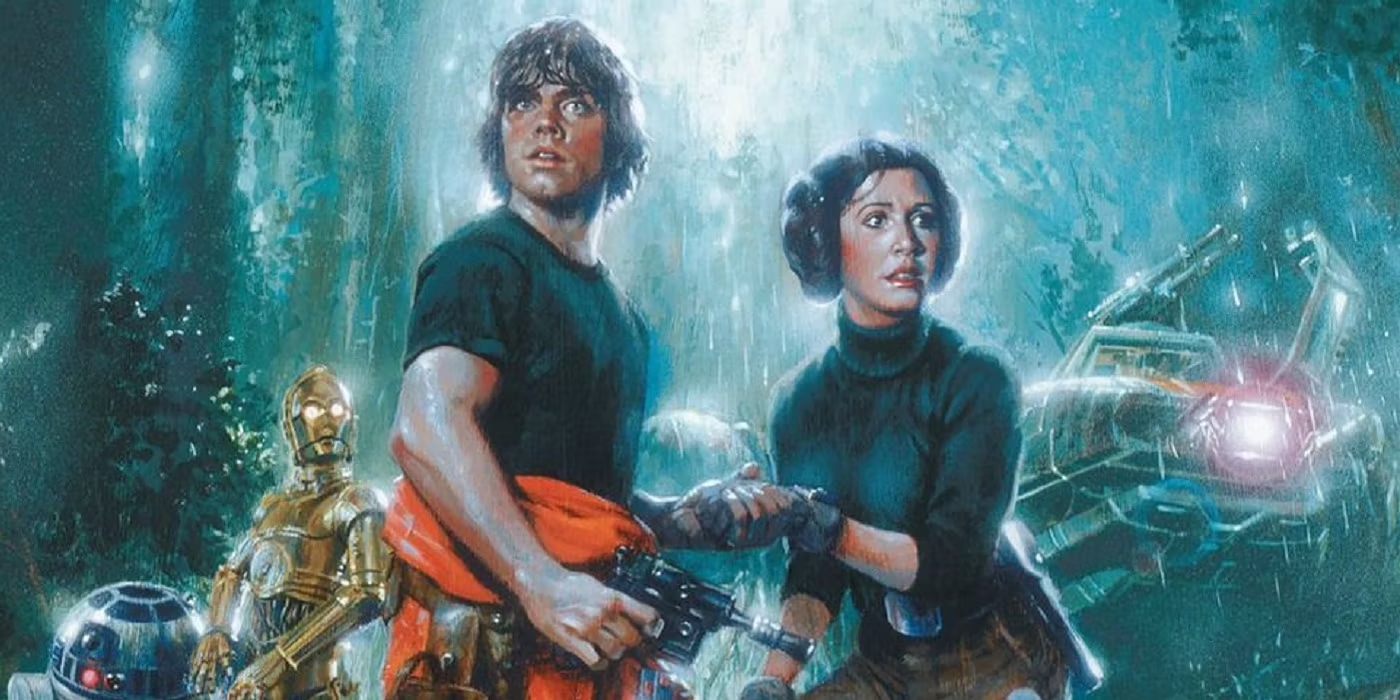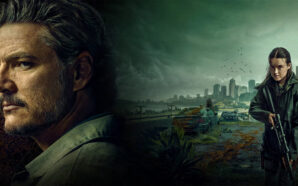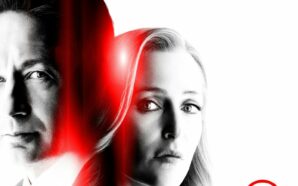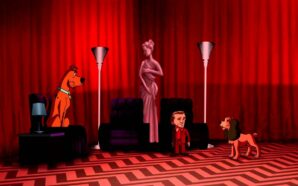The Empire Strikes Back is considered peak Star Wars and one of the best sequels ever made. What most people don’t realise is that it was a second attempt at a Star Wars sequel. While Lucas always wanted to continue the story through cinema, there were fears that the seminal 1977 film would only be a tepid success and so while Star Wars, now A New Hope, was still in production, Alan Dean Foster was hired to write a sequel novel based on story discussions with George Lucas, which included abandoned ideas for the first film. The result was published in 1978: Splinter of the Mind’s Eye.
Of course, Star Wars was a huge success and the novel became a minor footnote in its history, becoming the first expanded universe story in a franchise which now has thousands. Yet there’s another fascinating wrinkle that made me want to seek out this bizarre forgotten sequel. It was written into Foster’s contract that the novel could be filmed as a low budget sequel. This places curious limitations on the text. Usually the books can do what even the films can’t, offering endless imagination not linked to budget, but that’s not true here. It was written with a cheap adaptation in mind which never came to pass. For instance, Han Solo is absent from the story because at the time of writing Harrison Ford wasn’t contracted for any sequels.
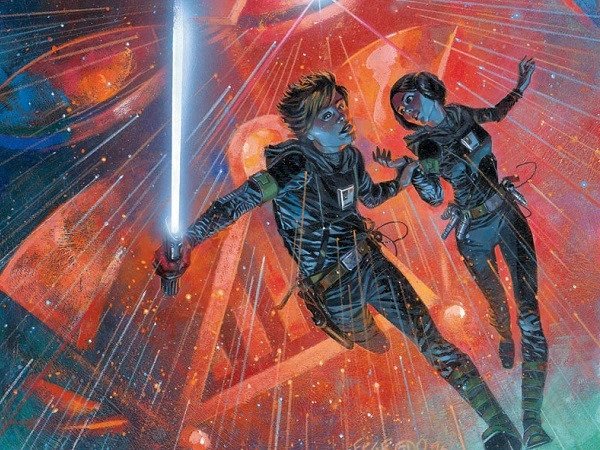
Opening Splinter of the Mind’s Eye for the first time, it was strange to enter a time in which Star Wars was not an established galaxy. All Foster had to go on was that first movie, which is light on detail. This was a time when lightsabre was the preferred spelling; when Deathstar was one word instead of two. “Moff” was Tarkin’s first name instead of his rank, and characters wielded pistols instead of blasters. ‘Droid was spelt with an apostrophe, stormtroopers were simply known as troopers, and lightsabers needed to be charged before use. The Force was more widespread, with even the Imperial government consisting of some Force-sensitives (although it’s curious that that term has been around since 1978). Foster also uses much more real Earth-bound language than modern Star Wars works. Camels, Cypress trees, and even the St. Elmo’s fire phenomenon are all mentioned, and a character wears a distinctive ‘Manchu’ mustache.
It’s not just the language and lore of Star Wars that is undeveloped but the philosophy too. Luke and Leia may be the heroes of the novel but their actions and outlook are far from that of the Jedi. It would be Yoda in The Empire Strikes Back who would come to define the light and dark sides of the Force. Being written beforehand, Splinter of the Mind’s Eye sees both Luke and Leia use their anger in situations with no ill effect or comment. Luke even uses the emotion to save Leia from falling down a chasm, “Momentary anger gave him enough energy to pull her the rest of the way clear.” The very first page, in fact, gives insight into this version of Luke’s mindset on the galaxy: “He felt sure there was no really happy living matter on any of those worlds. Only a plethora of destructive human diseases which fought and raged constantly against one another, a sequence of cancerous civilisations which fed on its own body.” In a modern story, Luke would start with this nihilistic opinion and change over the course of it but not here, this is just how Luke is.
The novel opens with its single scene set in space, with Luke, Leia, R2-D2, and C-3PO travelling to a meeting with a group of potential rebels who could join the growing Alliance. Leia’s ship suffers a fault and they both go crashing down towards the planet Mimban. The description of the crash was a lot more scientific than I was expecting, perhaps better suited to Star Trek than Star Wars, with much more effort to explain the technical aspects than what we now get from the franchise. Instead of a vague fault or something exciting like a dogfight, the crash is caused by “unequal radiation pulses” and Foster wants to explain how Luke’s X-Wing can enter the troposphere using braking rockets, which is technobabble for sci-fi rather than science fantasy like Star Wars. The realism continues planet-side too with journeys in the book taking days and weeks to complete instead of everything happening quickly and each location being close-by like in most latter Star Wars stories.
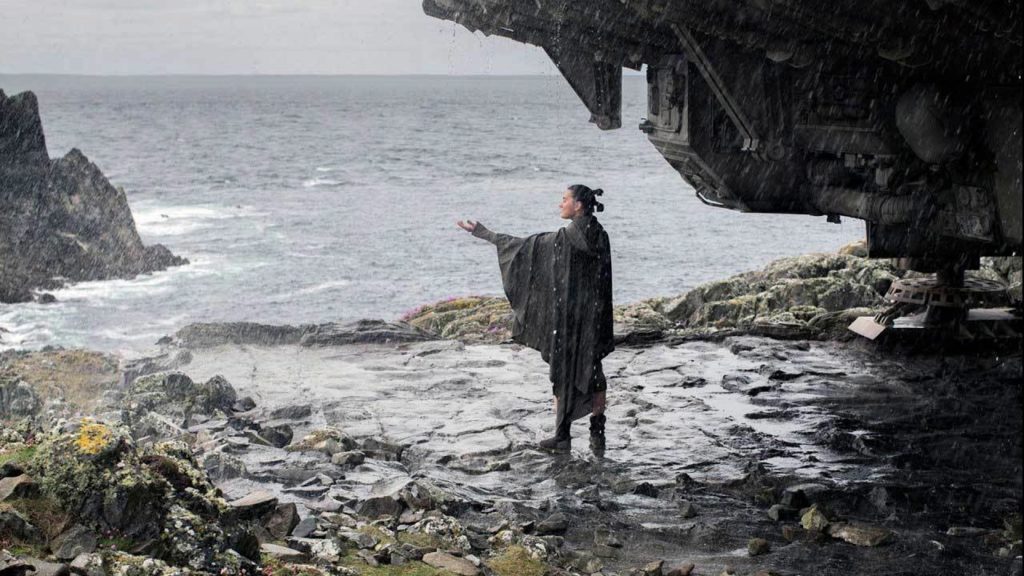
Mimban is now part of the canon, being mentioned in The Clone Wars, Andor, and appearing in Solo, and in Splinter of the Mind’s Eye it feels very much like a proto-Dagobah. Lucas clearly had an idea for a “part swamp, part jungle, part bog” since the beginning and this is where it first fit. It also keeps the budget down if the novel were adapted, with the story mostly being set in the jungle and caves. What surprised me most about the setting is that Luke isn’t fascinated by this new biome at all. He’s known only desert his whole life but he doesn’t act like it. It doesn’t faze him, nor is he in awe. One of my favourite details in The Last Jedi is Rey, a girl from a desert world, putting a hand out to feel this odd thing called rain. The book could have done the same with Luke but the plot marches on with little thought of character.
George Lucas may claim he had the story of the original trilogy all planned out in advance but that clearly isn’t true. The kiss between Luke and Leia in Empire proves he hadn’t decided they were siblings at the time and Splinter only adds more evidence. There’s a burgeoning romance between the two in the book and, with Han absent, Luke takes on that role, being more argumentative with Leia than I was expecting. Yet if anything, the relationship feels more akin to Anakin and Padme in Attack of the Clones. It’s more an unrequited love with Luke creepily lusting over her, thinking of kissing her while she sleeps. The novel plants us in Luke’s mind more than Leia’s and it’s hard to gauge how much of the attraction is reciprocated.
Searching for both shelter and a way off Mimban, Luke and Leia (the droids are also there but do absolutely nothing throughout the book) find an illegal Imperial mining town and try to fit in with the workers. To do so, Leia pretends to be Luke’s slave, has to learn to walk less like a princess, and is even slapped by Luke to maintain the cover. Although she sharply kicks him in the shins in response and they roll around in the mud, wrestling and laughing. The cantina they enter is disappointing after the menagerie we saw in A New Hope. It’s full of humans to keep the budget down and only a couple of native small green furry people, who Luke and Leia are uncomfortably apathetic and dismissive towards. Halla, a mysterious old Force-user, approaches them with a quest in the tavern like a D&D campaign. She’s hunting for the Kaiburr crystal, later developed and altered in the canon as Kyber crystal, which is a legendary object that can increase one’s perception and power in the Force.
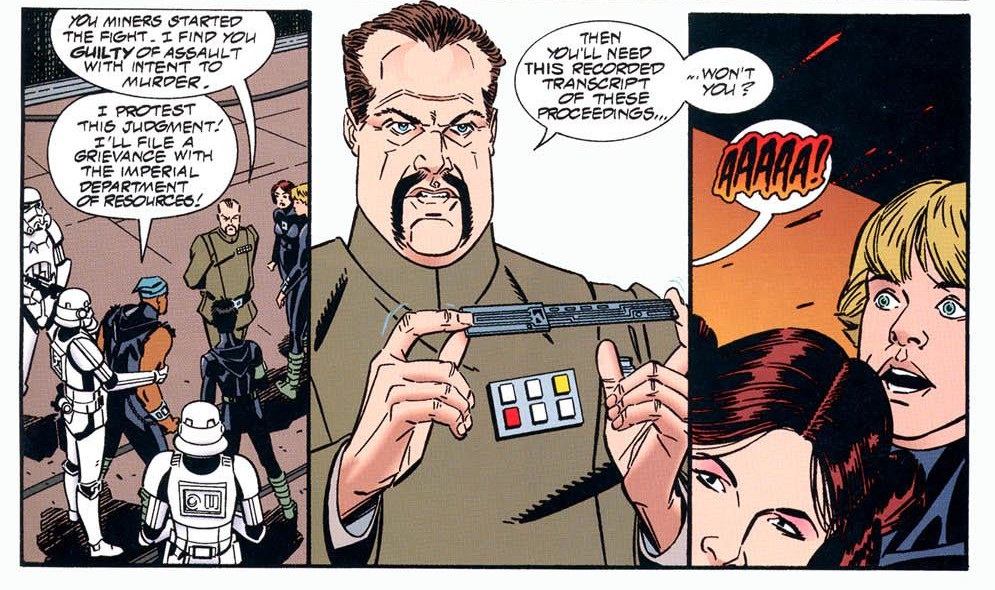
Before the quest gets underway, Luke and Leia get into a fight with local ruffians who, shockingly, attempt to rape Leia, grabbing her chest and ripping her clothes. It’s such a weird, dark turn for the story. Luke steps in however and uses his lightsaber, cutting off a hand and stabbing someone else through the leg. Curiously, the hand stump cauterises instantly unlike A New Hope. The Empire finally show up but the troopers and officers initially seem like anything but baddies. Introducing the main villains by having them be a competent police force, breaking up a homicidal fight and arresting would-be rapists is an odd statement. Maybe Foster could have highlighted the negative geological effects of the Imperial mining operation but considering how much Luke and Leia hate the planet and are dismissive of the natives, they’d probably cheer on a natural disaster. The two of them are also detained and Luke’s lightsaber is taken but no one thinks twice about it. It seems lightsabers are common enough weapons, not just the blade of a Jedi.
Splinter of the Mind’s Eye is not a kid’s book. While the original Star Wars was a family-friendly adventure, its novel sequel takes it to a level even modern Star Wars fears to tread. The primary antagonist, Grammel, is introduced during an interrogation with the prisoners and he is a very violent man. His circumstances feel like those of an Imperial officer in Rogue One or Andor: a middle manager wanting to rise in the ranks, a Krennic figure, constantly undermined by his superior. He’s not a mythological figure in black armour with supernatural abilities or a particularly arch pantomime villain, making him a bold choice for the immediate sequel to Star Wars. What he does have is desperation, irritation, and a big stick to poke a man’s eye out. “Blood and pulp squirted in all directions.” And then when our heroes lie to him, Grammel brutally beats Leia. There’s no torture droid or even the more abstract mental torture seen in Andor, just a savage beating.
Han’s absence in the novel also extends to Chewbacca so Foster creates two new big strong furry aliens to help Luke and Leia escape from prison. They are Yuzzem, but described very differently to the Yuzzum in Return of the Jedi, and Luke bafflingly knows their language having learnt it on Tatooine. Luke and Leia’s characterisation is flipped in the modern canon and I much prefer it. In Splinter of the Mind’s Eye, Luke is worldly and not the naïve kid he should be. He knows how the galaxy works, and can lie and steal with ease, despite his sheltered existence.
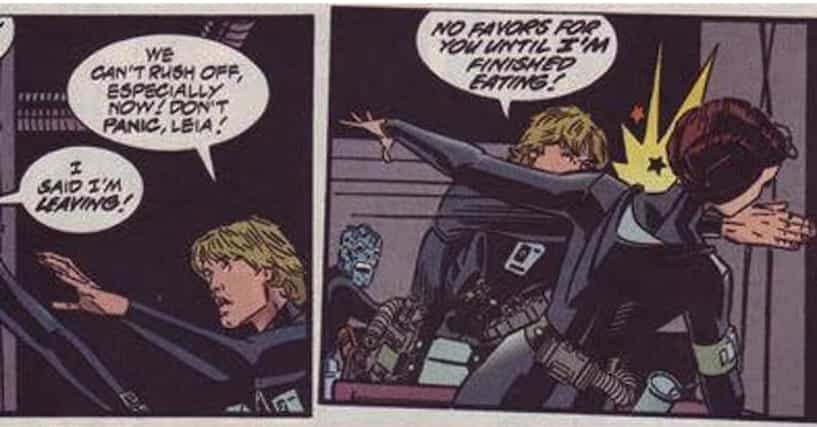
Likewise, Leia is not the “into the garbage chute, flyboy” character we know from the films. She’s more like Luke should be, uncertain of everything, inexperienced with life outside her sheltered existence, only for her it was a palace. I prefer her as the adventurous spirit who has been aiding the rebellion for years. Instead, she flips out, faints, and screams. She’s not politically minded and only began fighting the Empire because they created nothing entertaining and stifled original thought. I hate this. And the worst example is that Leia can’t swim but Luke, the kid who never left the desert, can.
Halla feels like a proto-Yoda, an unassuming old woman who is revealed to be wise and teaches Luke in the ways of the Force. Although instead of lifting an X-Wing, she teaches him how to lift a food tray and smash it against a button to release them from their cell. The following action sequence is where the book truly captures the feeling of the original film, with another prisoner break full of corridor blaster battles. Grammel loses a hand in an explosion but instead of the usual robotic replacement that Empire would make the norm, it is rebuilt from flesh. But then the novel begins to feel more like Indiana Jones than Star Wars, with Lucas’s interests and sensibilities all bubbling to the surface before he would define them with their own films. The following chapters are full of those classic adventure tropes, following the paper map (paper? In Star Wars?) to the location of a hidden mythological gemstone.
Luke and Leia are soon attacked by native race the Coway, who are primitive beings with brown fur. Here we get some truly brutal deaths and actions very unbecoming of a would-be Jedi. There’s no nonlethal incapacitation and instead Leia bashes one’s brains in with a rock before throwing an axe at another; Luke then does the same using his lightsaber. Our ‘heroes’ are captured by the Coway in a scene that feels very reminiscent of what will happen in Return of the Jedi with the Ewoks.
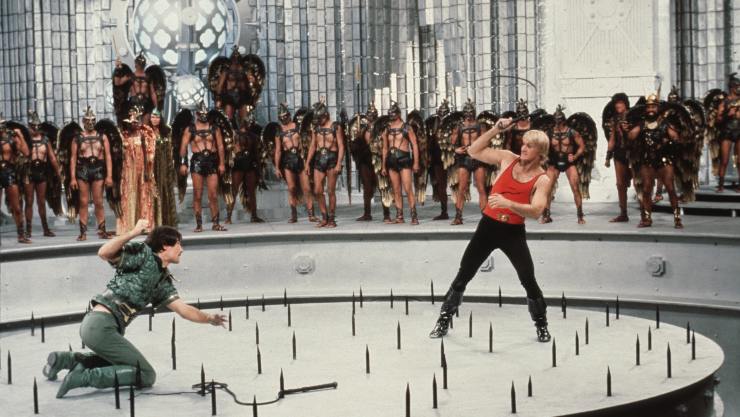
The Coway offer a fight to the death to decide whether Luke and Leia are allies and Luke agrees, deciding “It’s more important to me in the end that I go on living than it is for me to make some vague patriotic sacrifice.” This is very different to his eventual mindset come The Last Jedi. Which I’m okay with, it makes sense for New Hope-era Luke to feel this, but his violence and unwillingness to seek other options is never commented on or challenged as it should be. The fight is properly violent too, being shockingly bloody and having no sci-fi twist like the big spiky circle in Flash Gordon. No, it’s just two beings desperately trying to drown each other in a shallow pond. Luke unknowingly uses the Force to win, growing ever stronger.
Now allies with the Coway, Luke and Leia fend off an attack by the Empire in a battle that very much feels like a first run of the Endor battle from ROTJ. The primitive race is able to beat the more advanced and technological Empire. They pull vines to make stalactites fall on stormtroopers and throw nets over them. It’s the first example of something that will become a classic staple of Star Wars. The battle itself is great and Luke gets to put his abilities with a lightsaber into practice, more so than he does in Empire, fighting with both saber and blaster, deflecting bolts without realising.
That’s when Darth Vader finally appears, scaring Leia to the point she demands Luke kill her if he gets too close. Vader is rightly portrayed as a figure of pure terror, and he kills Grammel for failing to capture the rebels, but he is different than he is in the films. The voice is wrong, both his literal voice and Foster’s ability to write dialogue for him. The book must have been written before Vader’s voice was decided upon for A New Hope, with him speaking in snarls and whispers instead. He also begins a sentence with “You know…” which doesn’t feel right at all. He’s a powerful figure but I like that he’s not completely invulnerable; Leia is able to get a glancing blow on him forcing him and his squad to retreat.
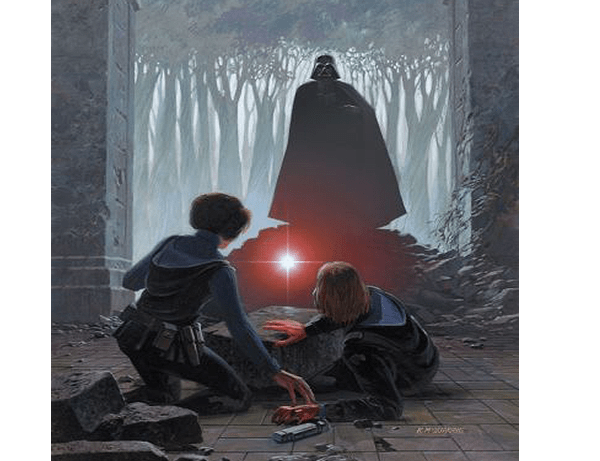
An odd week-long time jump later, Luke, Leia and Halla arrive at the Kaiburr crystal temple and once again face off with Vader. After a novel of disappointment, I love how Foster treats Leia here. She stands up to Vader, overcoming her fears after her torture at his hand in A New Hope, and grabs Luke’s saber to duel him. I would have liked to have seen something like this in the films. She even manages to cut Vader’s mask before he dominates her, leaving her face and body heavily scarred. Luke then fairs better but perhaps too much so. He actually bests Vader, cutting his arm off before he falls down a hole, the complete inverse of what happens in The Empire Strikes Back. I don’t like Vader being so easily beaten but it is a cool duel and more of an end to his and Luke’s conflict than Empire’s second act, although Luke does still collapse to the floor, dying.
Halla could have left the temple with the legendary crystal, which I’m guessing is the Mind’s Eye from the title although it is never called that, only “Kaiburr crystal.” ‘Splinter of the Mind’s Eye’ is a cool title befitting a pulp adventure, maybe even a giallo movie, but it doesn’t quite fit the novel. Instead, Halla decides to stay and help Luke; she’s the Han of this story, the greedy outlaw who gains a heart. Luke briefly dies but is revived by the crystal, which he then uses to heal Leia of her injuries and scars too. I couldn’t help but think of Rey and Ben at the end of The Rise of Skywalker – the scenes are very similar. And it also brings to mind the ending of Indiana Jones and The Last Crusade, clearly an idea for an ending Lucas was trying to find the right home for. Our heroes, rejuvenated and victorious, drive off into the sunset with a new magical object to help them defeat the Empire once and for all.
Splinter of the Mind’s Eye was a fun, quick read that may be disappointing as an actual sequel to the original Star Wars but can now be enjoyed as a fascinating piece of the franchise’s history, a time capsule oddity from before Star Wars was the Star Wars we now know. It was supposed to be the cinematic sequel in a different form yet feels instead like what the novels would become, and often still are: a smaller adventure set between the main instalments. It’s more akin to a Disney+ series than a tentpole movie. Interestingly, the restrictions placed upon Splinter of the Mind’s Eye, that were enforced to make it viable as a lower-budget film, set a template for the novels that remained even when those restrictions were lifted. This is what Star Wars books now are, shying away from the greater canon so not to disrupt anything in the movies and shows, yet it ironically began because that was what was needed of the next movie.
Have you read Splinter of the Mind’s Eye? Let me know in the comments and be sure to geek out with me about TV, movies, books, and video-games on Twitter @kylebrrtt.




